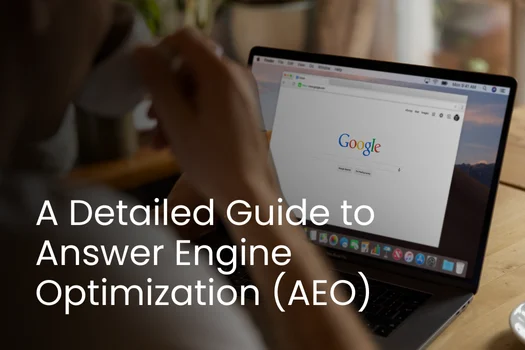According to Gartner, the SaaS spending of $200 billion in 2023 is expected to increase by 18% in 2024. Understanding and using critical KPIs is critical for continued growth in the ever-changing world of Software as a Service (SaaS). Customer Lifetime Value (CLV or LTV) and Customer Acquisition Cost (CAC) stand out as guiding beacons, enabling firms to make educated decisions and optimize their saas growth strategies and sales performance.
Customer Lifetime Value is the overall revenue a company may expect from a customer throughout their relationship. It considers parameters such as average purchase value, frequency of purchases, and customer lifetime. Businesses must seek expertise from the best seo saas companies that understand CLV better, manage resources, focus on customer retention initiatives, and identify high-value customers for personalized marketing efforts. Implementing strategies such as saas social media marketing can also be pivotal in reaching and engaging potential customers, further enhancing CLV and optimizing CAC.
Customer Lifetime Value (CLV or LTV): Unveiling Future Potential

Definition: Customer Lifetime Value (CLV), also known as Customer Lifetime Revenue (CLR), is a pivotal metric for businesses seeking to understand the long-term profitability of their customer base. It estimates the net profit a customer is expected to contribute over their relationship with a company. In essence, CLV represents the average revenue a customer generates throughout their lifespan as a customer. Calculating CLV becomes even more crucial when considering factors such as SaaS conversion rate, SaaS sales strategy, and SaaS affiliate marketing, as it allows businesses to project the value of a customer over time, aiding in strategic decision-making and resource allocation for sustained growth in the competitive SaaS landscape.
Importance: Understanding CLV is paramount for strategic decision-making in customer acquisition and retention. Here's why:
1. Sets an upper limit on spending to acquire new customers:
Businesses can better analyze and understand customer lifetime value (CLV) Insights from a saas dashboard and saas reporting tools. By Knowing the potential revenue a customer can bring over their lifetime, businesses can establish a reasonable budget for customer acquisition. This prevents overspending on acquiring customers whose potential value might not justify the initial acquisition cost, as reflected in real-time data on the dashboard.
2. Focuses on future value rather than past profitability:
Unlike historical profitability metrics, CLV is forward-looking. It allows businesses to concentrate on the future potential of their customer relationships, guiding marketing, SaaS branding, and customer service strategies for long-term success.
Calculating CLV:
1. Simple CLV Model:
Formula: CLV = (Average Monthly Revenue per Customer) / (Churn Rate)
For example, if the average monthly revenue on popular saas products is $100 and the churn rate is 2%, CLV = $5,000 (50 months).
2. Discounted CLV Model:
Formula: CLV = [(Average Monthly Revenue) * (Retention Rate)] / (Discount Rate)
Example: Assuming a discount rate of 7%, CLV = $3,793.55 (38 months).
Considerations: The discount rate: Influences CLV and is often derived from actual interest rates or inflation. A higher discount rate implies a lower present value of future cash flows, affecting the CLV.
Holistic approach: CLV calculations should consider the customer journey, including repeat purchases, upsells, and referrals.
Customer Acquisition Cost (CAC): Deciphering the Investment
Definition:
Customer Acquisition Cost (CAC) quantifies the total marketing and sales expenditure associated with acquiring a new customer over a specific period. It provides insights into the efficiency and effectiveness of a company's customer acquisition strategies.
Calculating CAC:
Formula: CAC = (Total Marketing and Sales Costs) / (Number of Customers Acquired)
Example: If $100,000 is spent on marketing, $200,000 on sales, and 1,000 customers are acquired, CAC = $300.
Considerations:
Inclusive costs: CAC includes various expenses such as salaries, bonuses, commissions, creative, and ad expenditures. A thorough understanding of all associated costs is crucial for accurate CAC calculation. Additionally, monitoring and analyzing saas reviews can provide valuable insights into CAC and optimizing marketing flywheel.
Continuous optimization: Reducing CAC improves profitability and efficiency in marketing and sales efforts. Regularly reassessing and optimizing acquisition strategies specific to saas lead gen can lead to more cost-effective customer acquisition.
CLV to CAC Ratio: Striking the Right Balance for Success
Definition:
The CLV to CAC ratio is a pivotal metric that compares the value derived from a customer (CLV) to the cost of acquiring that customer (CAC). It serves as a crucial indicator of the sustainability and efficiency of a business's customer acquisition and retention strategies.
Calculating the CLV to CAC Ratio:
Formula: CLV to CAC Ratio = CLV / CAC
A ratio above 3 is generally considered healthy, indicating that the business generates substantial returns from customer acquisition investments.
Considerations:
Striking the right balance: A high CLV to CAC ratio suggests the business is acquiring customers efficiently and deriving significant long-term value. However, an excessively high ratio may indicate underinvestment in customer acquisition, potentially hindering growth.
Industry benchmarks: Comparing your CLV to CAC ratio with industry benchmarks provides context and insights into your competitive positioning.
Ideal Ratio:

The optimum CLV to CAC ratio is a significant indicator for long-term corporate success, with 3:1 being regarded best. This ratio indicates that the company may anticipate producing three dollars in customer lifetime value for every dollar invested in customer acquisition. A ratio of 1:1 indicates a delicate balance in which expenditure equals revenue earned by items or services. A 5:1 ratio, on the other hand, may imply possible underspending on marketing and sales activities, indicating a need for more expenditure to maximize customer acquisition value.
Businesses travel the route to sustainable growth through this delicate tango between CLV and CAC. Strategic calculation and optimization of these indicators provide a comprehensive view of customer interactions, allowing for informed decisions that advance SaaS enterprises.
Embracing the power of CLV and CAC is a fundamental saas go-to-market strategy for success in the b2b saas lead gen, where unlocking the full potential of customer relationships is paramount for flourishing in a dynamic market landscape.
Conclusion:
Finally, the dynamic interplay between Customer Lifetime Value (CLV) and Customer Acquisition Cost (CAC) is a guidepost for SaaS enterprises seeking long-term success. Companies may gain a better knowledge of their customers by recognizing the long-term profitability implicit in customer relationships and optimizing acquisition methods.
In addition to focusing on CLV and CAC, a crucial aspect for SaaS enterprises is ensuring that their online presence aligns with the industry standards for user experience and design. Investing in the best saas website designs and technical seo for saas becomes an integral part of the strategy for long-term success.
The optimal CLV to CAC ratio, with 3:1 as the apex, becomes a standard for efficient investment, guaranteeing that every dollar spent on acquisition provides significant returns in the form of customer lifetime value. Embracing the synergy between CLV and CAC is a strategic requirement and a critical component of prospering in the competitive landscape of Software as a Service.
Get The SaaS Marketing Toolkit
Related Blogs
We explore and publish the latest & most underrated content before it becomes a trend.
9 min read
What is Answer Engine Optimization (AEO)? How to optimize your website for AEO?
By Nishant Ahlawat
Subscribe to Saffron Edge Newsletter!

Get The SaaS Marketing Toolkit










